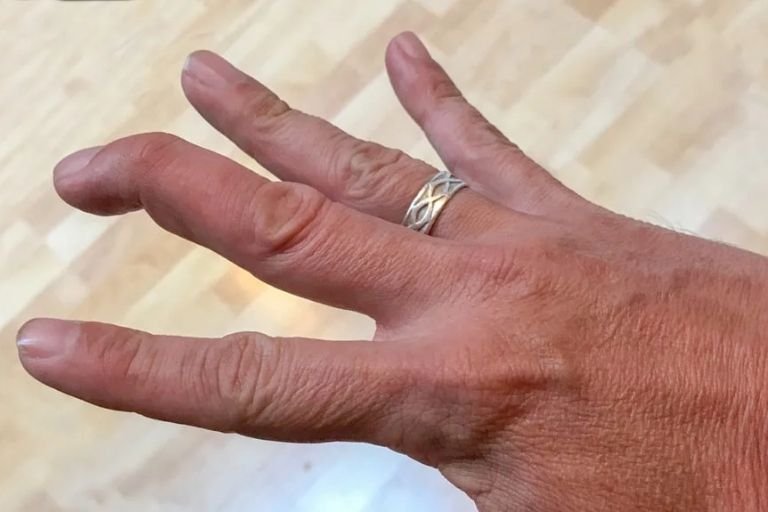- Fitwell Physiotherapy
Winging Scapula

Winging scapula, medically known as scapular winging, is a condition where the shoulder blade (scapula) sticks out prominently from the back rather than lying flat against the rib cage. This can lead to pain, weakness, and limited mobility in the shoulder and upper back. Understanding its symptoms, causes, and treatments can help manage this condition effectively.
Please submit your details below.
Symptoms:
- Visible protrusion of the shoulder blade from the back.
- Pain or discomfort in the shoulder and upper back.
- Weakness in the shoulder and arm.
- Difficulty with overhead activities.
- Limited range of motion in the shoulder.
Causes:
Winging scapula can be caused by various factors, including:
- Nerve damage: Damage to the long thoracic nerve or other nerves that control the muscles around the shoulder blade can lead to muscle weakness and scapular winging.
- Muscle imbalances: Weakness or tightness in certain muscles, such as the serratus anterior or the trapezius, can cause the scapula to protrude.
- Trauma: Injuries to the shoulder or upper back, such as fractures or dislocations, can result in scapular winging.
- Poor posture: Prolonged slouching or improper shoulder positioning can contribute to muscle imbalances and scapular winging.
When to See a Physiotherapist:
If you experience persistent pain, weakness, or noticeable winging of the scapula, it’s essential to consult a physiotherapist. They can assess your condition, identify the underlying causes, and recommend appropriate treatment and exercises to address the issue.
Risks:
Neglecting winging scapula can lead to further complications, such as:
- Chronic shoulder pain and stiffness.
- Reduced shoulder function and mobility.
- Increased risk of shoulder injuries.
- Compromised posture, leading to back and neck pain.
How to Prevent:
To prevent or minimize the risk of developing winging scapula, consider the following measures:
- Maintain good posture: Sit and stand with your shoulders back and down to avoid slouching.
- Strengthen shoulder muscles: Perform exercises targeting the muscles around the shoulder blades, such as the serratus anterior and the trapezius.
- Stretch regularly: Incorporate stretching exercises to maintain flexibility in the shoulders and upper back.
- Avoid overloading the shoulders: Use proper lifting techniques and avoid repetitive overhead activities that strain the shoulder muscles.
Treatments:
Treatment for winging scapula typically involves a combination of therapies tailored to address the underlying causes and symptoms. These may include:
- Physiotherapy: A physiotherapist can prescribe specific exercises to strengthen weak muscles, improve posture, and restore shoulder mobility.
- Nerve mobilization techniques: For cases involving nerve damage, gentle mobilization techniques may help alleviate symptoms and improve nerve function.
- Manual therapy: Hands-on techniques such as massage and joint mobilization can help relieve muscle tension and improve shoulder mechanics.
- Bracing: In severe cases, wearing a supportive brace or taping the shoulder blade may help stabilize the scapula and reduce winging.
- Surgical intervention: In rare cases where conservative measures fail to alleviate symptoms, surgery may be considered to repair damaged nerves or muscles.
In conclusion, winging scapula can significantly impact shoulder function and quality of life if left untreated. Seeking early intervention from a physiotherapist and adopting preventive measures can help manage symptoms effectively and prevent complications.
Frequently Asked Questions
Related Conditions
How Fitwell Physiotherapy Can Help?
Dr. Richa’s Fitwell physiotherapy has an extensive team of physiotherapists all within their own specialist areas of physiotherapy. Whatever your condition, we guarantee that we will have the best physiotherapist for you. We assess, diagnose, plan, cure and care for you.
Fitwell Physiotherapy Clinic, Pune provides you best physiotherapy treatment in Kharadi, pune. We also serve Chandan Nagar, Vadgaon Sheri, Keshav Nagar, Wagholi & nearby Areas in Pune. We are experts in treating Neck Pain, Hand Pain, Back Pain, Lower Back Pain, Knee Pain, Stiff Neck, Sciatica, Arthritis, Stroke Paralysis & Post Surgical Rehab.
We provide Specialized physiotherapy treatments in Sports Injuries, Pre and post Surgery, Neurologic, Pediatric, Chronic Pain/Fatigue, Rheumatology, Women’s Health, Men’s Health, Ergonomics, Vestibular, Amputees & all sort of Pain treatment and lifestyle conditions.

































































































